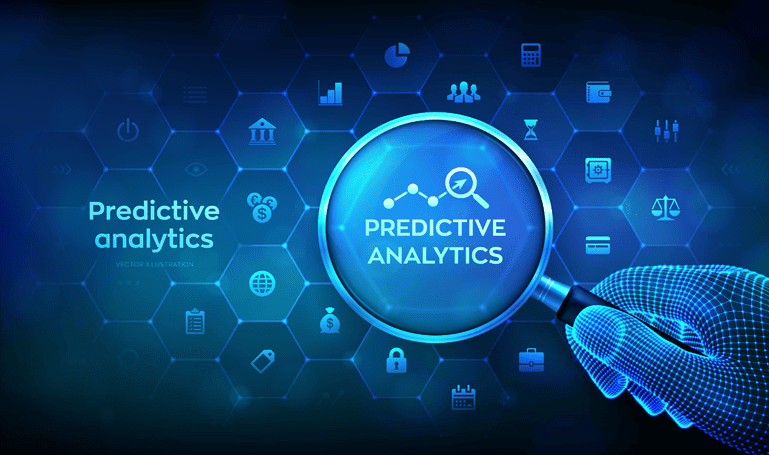Overview
Predictive analytics has become a foundational capability for enterprise business insight teams, enabling them to move beyond historical analysis and into forward-looking, scenario-driven intelligence. By leveraging statistical models, machine learning, and vast organizational data sets, business insight teams can generate timely, predictive insights that inform strategic planning, operational execution, and customer engagement strategies.
As enterprises navigate increased complexity and volatility, the ability to forecast business outcomes with precision is not merely advantageous—it is essential for sustained competitiveness.
How Predictive Analytics Enhances Business Insight
Business insight functions are uniquely positioned to bridge analytics and strategic decision-making. Predictive analytics strengthens this role through a structured, value-driven approach:
- Framing the Business Question
Insight teams work with stakeholders to define the core business challenge—e.g., “What factors drive customer churn?” or “How will demand evolve under current macro conditions?” - Data Integration Across the Enterprise
Business insight professionals consolidate structured (ERP, CRM, transactional) and unstructured (NPS, social, behavioral) data to form a holistic view of business operations and customer behavior. - Modeling for Business Relevance
Statistical and machine learning models are calibrated not just for accuracy but also for business interpretability—prioritizing models that explain why outcomes occur, not just what may happen. - Operationalization of Insights
Predictive outputs are integrated into business dashboards, decision workflows, or planning systems, ensuring they are actionable for stakeholders across functions (e.g., sales, marketing, finance).
Key Predictive Techniques for Business Insight
Insight teams typically leverage a range of analytics techniques, each aligned to specific business questions:
- Propensity Modeling
Predicts the likelihood of customer behaviors such as purchase, churn, or upsell, driving targeted interventions. - Segmentation and Clustering
Uncovers behavioral patterns to inform personalized strategies, product positioning, or resource allocation. - What-If Simulation Models
Evaluates the impact of different strategic levers or market scenarios on KPIs (e.g., revenue, cost, satisfaction). - Time Series Forecasting
Projects future trends in demand, revenue, or performance metrics based on historical seasonality and emerging signals.
High-Impact Use Cases in Business Insight
Predictive analytics significantly elevates the value of business insights across domains:
- Customer Intelligence
Predicting churn risk, identifying high-value prospects, and personalizing experiences based on lifetime value models. - Market & Demand Forecasting
Anticipating regional or product-level demand fluctuations to guide pricing, distribution, and promotional strategy. - Workforce Planning
Forecasting hiring needs, attrition risk, and productivity trends to inform talent and capacity strategies. - Financial Planning & Analysis (FP&A)
Projecting revenue, cost, and margin trends to support dynamic scenario planning and capital allocation. - Campaign Optimization
Identifying which customer cohorts will respond to specific offers or messages, improving ROI and conversion rates.
Enterprise Tools Enabling Predictive Business Insight
Business insight functions benefit from platforms that balance analytical power with business accessibility:
- Power BI with Azure Machine Learning
Enables advanced analytics integration with business dashboards and low-code modeling for analysts. - Tableau with Einstein Discovery (Salesforce)
Offers AI-driven predictions within a familiar visualization environment, democratizing insights across teams. - Qlik Sense with AutoML
Delivers interactive dashboards with embedded machine learning for pattern recognition and trend projection. - Google Cloud Looker & BigQuery ML
Combines robust data querying with scalable model deployment directly from the BI layer. - IBM Cognos Analytics
Integrates AI-powered forecasting and narrative insights into enterprise reporting environments.
Strategic Impact
When integrated into the business insight function, predictive analytics delivers tangible enterprise value:
- Accelerates Decision-Making by arming executives with foresight rather than retrospective data.
- Improves Agility through proactive responses to emerging trends, competitor moves, or market disruptions.
- Drives Personalization by aligning products, messages, and experiences with predicted customer needs.
- Informs Resource Allocation by prioritizing investments where returns are projected to be highest.
- Elevates the Role of Insight Teams from report producers to strategic enablers and trusted advisors.
Conclusion
In an era where speed, relevance, and foresight define market leadership, predictive analytics empowers business insight teams to deliver intelligence that is not just descriptive but prescriptive and actionable. By embedding predictive capabilities into insight workflows, enterprises gain a durable advantage—transforming data into foresight, and foresight into value.
Would you like this version adapted for specific industry verticals (e.g., retail, BFSI, pharma), embedded in stakeholder communications, or converted into a strategic presentation for insight leaders?

